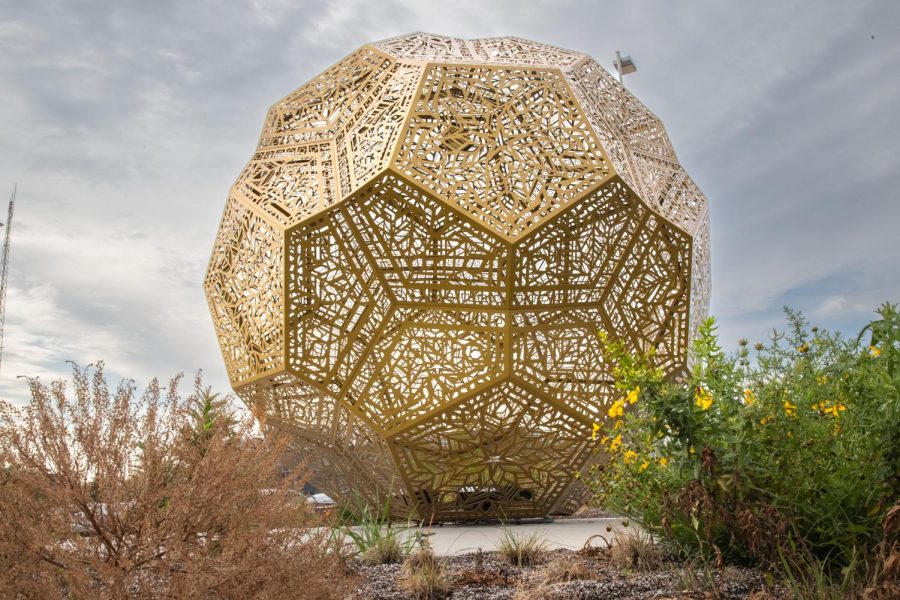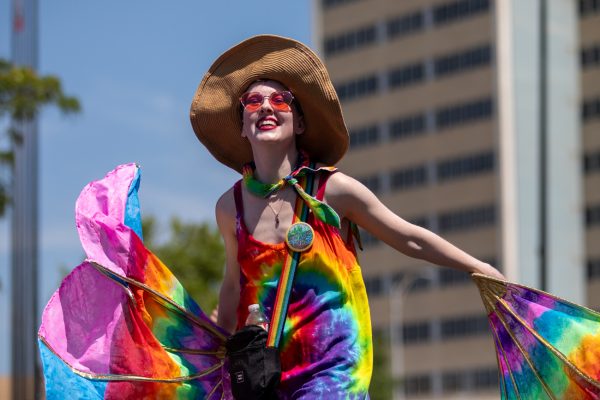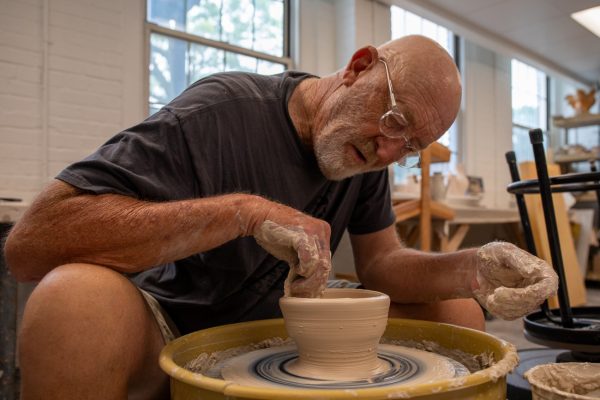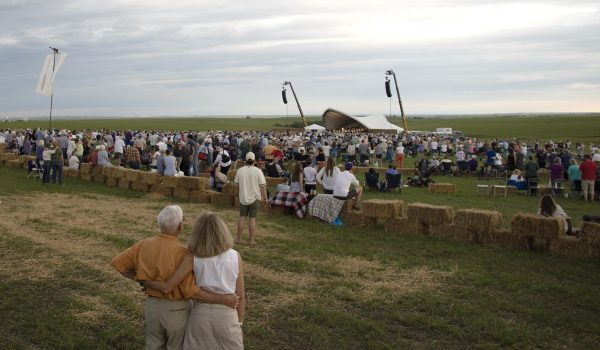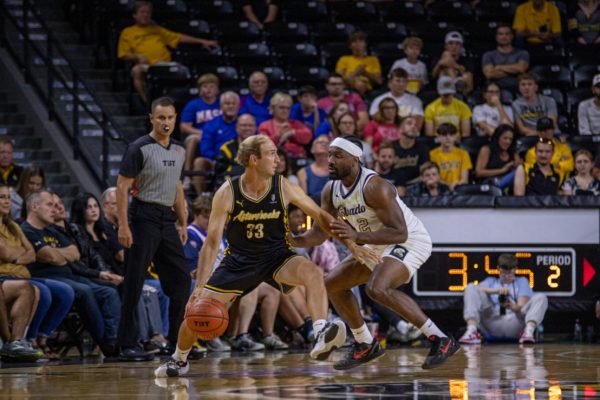72-sided artwork created for Wichita State discussed at ‘Artist Talk’
As you walk toward the entrance of Woolsey Hall, you might notice a new outdoor sculpture in the shape of a dodecahedron — or an unknown shape with dozens of sides.
The newest sculpture, “Stratosphere,” has 72 faces — the most faces The Hyperspace Bypass Construction Zone (HYBYCOZO) has built for a permanent public artwork.
The pattern contains a pentagon face with representations of wheat grain, sunbursts and a star. A second face is a hexagon, with the same pattern, and is broken into three pieces, representing aviation wings. The star at the center of each pentagon face was created by accident but was left by in honor of the state motto of Kansas: “Ad Astra Per Aspera.”
This piece was created, designed and built specifically for the Wichita State campus by Yelena Filipchuk and Serge Beaulieu, who own the collaborative studio HYBYCOZO. The pair are known for their geometric art all around the world spanning from San Francisco, California, to the United States Embassy in Ankara, Turkey. Their sculptures tell stories through shapes and patterns.
On Thursday, June 2, the Wichita State community was invited to hear from the artists who designed and created “Stratosphere,” the newest outdoor sculpture on WSU’s campus.
Rodney Miller, outgoing College of Fine Arts dean, introduced Filipchuk and Beaulieu for a speech on the new outdoor sculpture’s inspiration, building and background. Miller, who will retire this month, expressed how he felt about “Stratosphere” being the last installation during his time at the university.
“I think it’s a piece that is already becoming iconic in that people gravitate towards it,” Miller said. “I think they did a beautiful job tonight, so this was kind of the cherry on top of everything.”
In the spring of 2022, Ulrich Museum of Art employees and Miller were asked by those working on Woolsey Hall to find a new outdoor sculpture for the newly built business building. HYBYCOZO was contracted to create “Stratosphere.” Flipchuck and Beaulieu said the process of their art takes deeper consideration than one would think looking from the outside.
“Isn’t the way that we see the world actually informed by these patterns in nature?” Filipchuk said. “And wouldn’t we think that the original concept of beauty or proportion comes from these patterns that appear in nature?”
Most of the HYBYCOZO artwork along with “Stratosphere” begin with basic platonic solids like a cube or a tetrahedron then go further into more complex geometric figures such as Archimedean and Catalan solids.
“For us, a big part of our practice has been finding the resonance and proportion between a two-dimensional pattern and a three-dimensional shape,” Filipchuk said. “And you’ll see that that is something that we try to repeat in our artwork often is that there is often a very simple mathematical proportion … that informs the way that we choose the pattern.”
Some of the dimensions they considered when creating were light, motion, interactivity and immersion.
“You can see (‘Stratosphere’) differently by looking inside of it, viewing it from far away, viewing it from up close,” Beaulieu said. “And there’s so many different ways to look at it, and so we invite people to look at it differently the same way they would look at their life differently.”
Artists based “Stratosphere” on a dodecahedron, which is part of the group of platonic solids documented by Plato where each solid was associated with an element. The dodecahedron was associated with the element aether, the highest element that, Filipchuk says, drives creativity.
After displaying their first temporary pieces in San Francisco, the artists got the opportunity to see how people reacted to their art.
“It teaches children and kids and youth that the public sphere is malleable,” Beaulieu said. “And they can be a part of this transformation.”
Teachers can download lesson plans from the HYBYCOZO website to teach to students, then take them on field trips to the sculpture sites. Filipchuk and Beaulieu want people to interact with the artwork and get a deeper understanding of it.
Filipchuk and Beaulieu have become advocates for public tech shops and maker spaces and hope that students along with the public take something away from viewing “Stratosphere.”
“You can create the world around you,” Filipchuk said. “In fact, it is created only through people’s imaginations because that’s the only way that anything ever comes into existence is a thought in someone’s head at first.”

Jennifer Anima was a reporter for The Sunflower. Before joining staff, she served as editor-in-chief at the Butler Lantern, the student newspaper for Butler...



